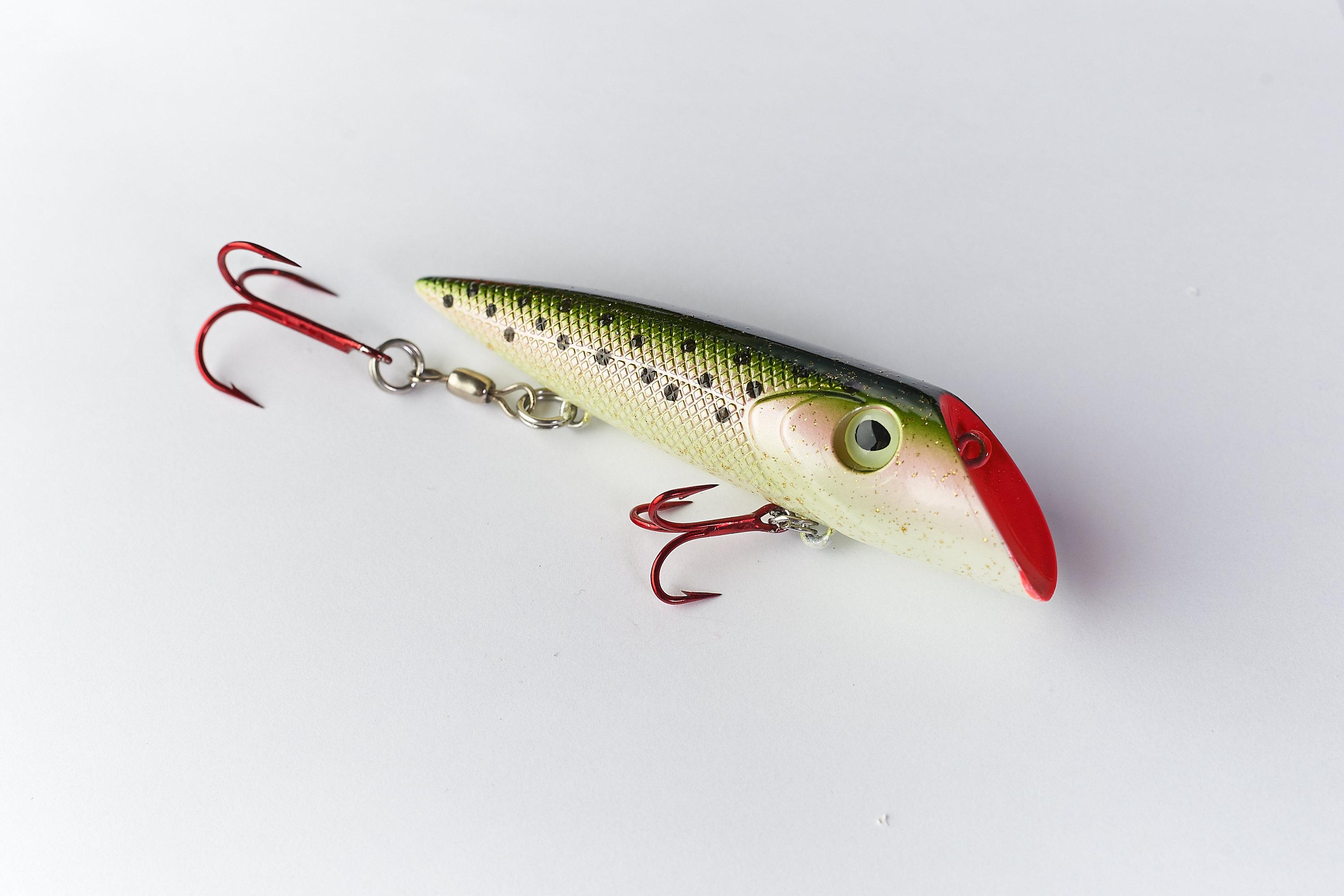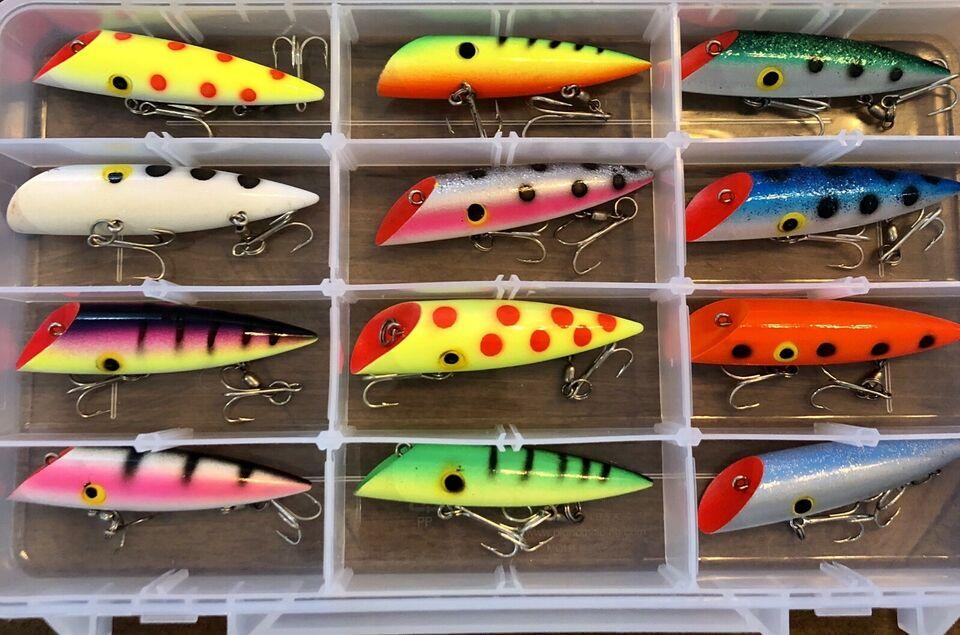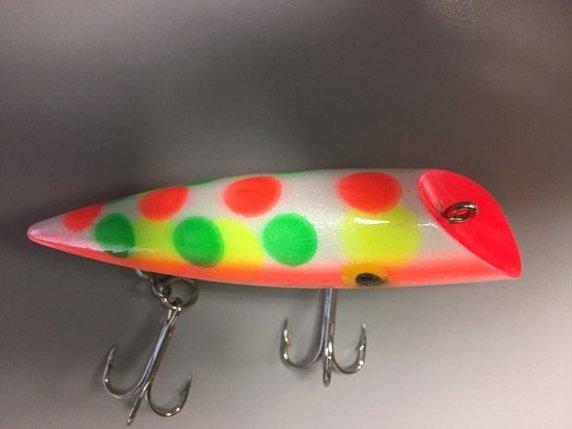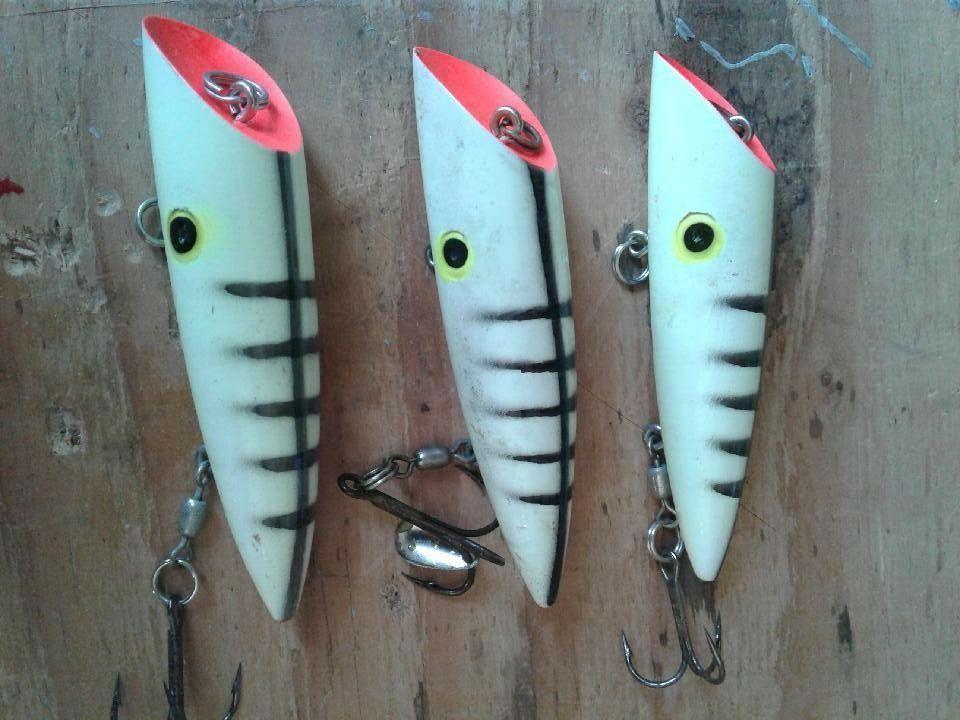



This is a remarkable story of how a hobby, producing a few fishing plugs for local fisherman, grew into a flourishing business and is still growing 65 years later. Tens of thousands of the plugs are produced annually in a small operation in Kelowna and marketed throughout North America and others areas in the world. Lyman Dooley was born in Lloydminster, Saskatchewan in 1914. The family moved to Kelowna in 1929 and lived on the corner of Ethel Street and Dehart Ave. He served in the Royal Canadian Air Force during the war and was stationed in Newfoundland. One of Lyman’ hobbies was tying flies. In 1946, he and two other partners established Game Guide – a fishing sports store located at 1423 Ellis Street, across from the Memorial Arena. Lyman was production manager, Roy Longley was business manager and Colonel Gemmil was a silent partner. It was at this time that Lyman designed and started producing fishing plugs from yellow cedar and he labelled them Lyman Lures and sold these at the store. He joined Sun- Rype in 1949 as manager of the warehouse, at which time he left Game Guide but continued producing the plugs in his basement at his home. Ed Strachan, who was employed under Lyman at Sun-Rype, recalls working after hours and on week-ends producing the plugs on a lathe machine, firstly at Lyman’s and then at his own home. Lyman and his wife Ernie would then paint them. the Author of this history page Ian Greenwood recalls visiting Lyman’s operation at his home around 1953. In 1956, the Dooley’s moved across the lake to Lakeview Heights and planted a vineyard. This ended the production of the lures and the equipment was stored for a number of years. In 1964. Fred August purchased it and moved it to the basement of his Interior Imports building in Vernon. The equipment needed restoration after being idle for some years. Fred carried on with the Lyman Lures name and expanded the product line including plastic plugs. He would travel in the valley, to the Kootenays and to Vancouver Island, combining a selling trip with holidays. In 1973,after being dormant for a few years. The company was sold to Howard Moore and Shirley Tapscott. Howard made the plugs and Shirley did the painting. She was was one of the first to paint the scales on some models using netting that gave the scale effect.they created a plug with the belly cut out which was known as ” the Lyman Flattie ” some of those plugs are still around today. In those days the plugs were packaged in plastic boxes, and sometimes you can find those boxes kicking around in a few tackle boxes. They had a salesman named Gord Atha, who travelled around BC promoting and selling the plugs in stores for them. Howard and Gord have since passed on and Shirley lives in Ontario now. Shirley’s friends Myron and Laurie Feniuk from Vernon use to help out also, and Myron even designed a tool for essembling the split rings easier. Myron still uses some of those first plugs in 1973 and says they still work good. The business it was believed, was then sold to Andy Klym and a silent partner. The operation was located on the Okanagan Landing road in Vernon. Andy’s wife, painted the plugs produced from yellow cedar, while his partner took care of the accounting. These were sold to retail stores in the valley, Kootenays and the Island. They did experiment with plastic plugs but in deep water, the pressure caused a few plugs to leak and they discontinued them. Joe Stein, who had worked for Andy selling on the road, purchased the company in 1979. As he lived in Kelowna , rather than continuing to commute to Vernon he decided to move the operation to a newly constructed building on Powick Road in Kelowna. It is the same building where the company is located today. Health problems necessitated him selling the business to Carl Neufeld in 1981. Since acquiring the company, it has been a real family operation, beginning with Carl and his wife Agnes, son Glenn and daughter Laura. When they took over there were 6 sizes of plugs and 47 different colours. 28 years later there are 10 sizes but over 100 different colours. Surprisingly only a few of the original colours have been dropped. The new ones result from feedback from fisherman – new colours being usually derived from variations of colour patterns already being produced – the ones that are catching the fish. From the very beginning, Carl set out to establish a rigid quality control program, insisting that there be consistency in the size, shape and colour of the plugs. This was hard to do on hand operated, 1947 era equipment. Daughter Laura took over the painting, with each plug being hand painted, and indeed she is still performing this task years later, except now airbrushing, and new tech paints are used. A family friend, Minh Souvanlasy, operated the lathe. With Carl’s foresight and leadership, Laura’s skill and artistry and Minh’s workmanship, they took the lures to a new level of quality. Without a distribution network, Carl and Agnes made many road trips throughout the province, selling the plugs to sporting goods stores in BC Many hours of hard work were involved To help offset travel costs, Carl represented the Eagle brand of fishing rods and reels and was named the No 2 distributor in Canada in during that time. Carl’s brother-in –law was transferred to Toronto and he thought he would have time to show the lures around at the boat launches in Lake Ontario. He ended up giving lures away to charter captains in order to get them I use them. Ontario only wanted the florescent painted plugs. This type of marketing worked and soon the charter boats were talking about them on their radios. Word of their effectiveness began to spread and soon there was a demand for the lures. In 1988. Glenn and Laura purchased the business from their parents. Initially Glenn concentrated on the marketing. Over time they had every distributor in Ontario wanting to sell Lyman Lures. As well, BC, the demand grew and the sporting goods distributors saw value in carrying the product. At that point, Lyman Lures stopped operating as a distributor and focused on production. Glenn spent some of his time visiting trade shows testing out other markets. He also arranged for sales in Holland and England. He has participated in a number of trade shows across the US. Today Lyman Lures are marketed throughout North America. Glenn and Laura upgraded the production line with various improvements. Firstly a new system for shaping the head of the lure was designed and manufactured. This change tripled the output of that process. A very major addition was the CNC lathe in 2000. This computerized lathe produces identical lures prior to the hand sanding process. Designed as a metalwork lathe, it had to be adapted to producing wooden lures. Glenn designed the necessary tools and did all the programming. Also innovations have been made to the painting and packaging departments and the graphics have been modernized. Early in 2009, after 28 years in the family, the business was purchased by Colin Redisky. The company has expanded it’s manufacturing and continues to develop it’s fine quality and proven fishing lure. The vision to open new markets in North America and other parts of the world continues to move forward. This fishing lure has had great success on native as well as exotic game fish in different areas and sport fishing destinations world wide. The Lyman Lure has won many fishing derbies and competitions establishing itself as a top competitor in its field . Being fisherman first. We realize that having the latest in gear is defiantly enticing, but you will always go with what works and has always worked. VIA>